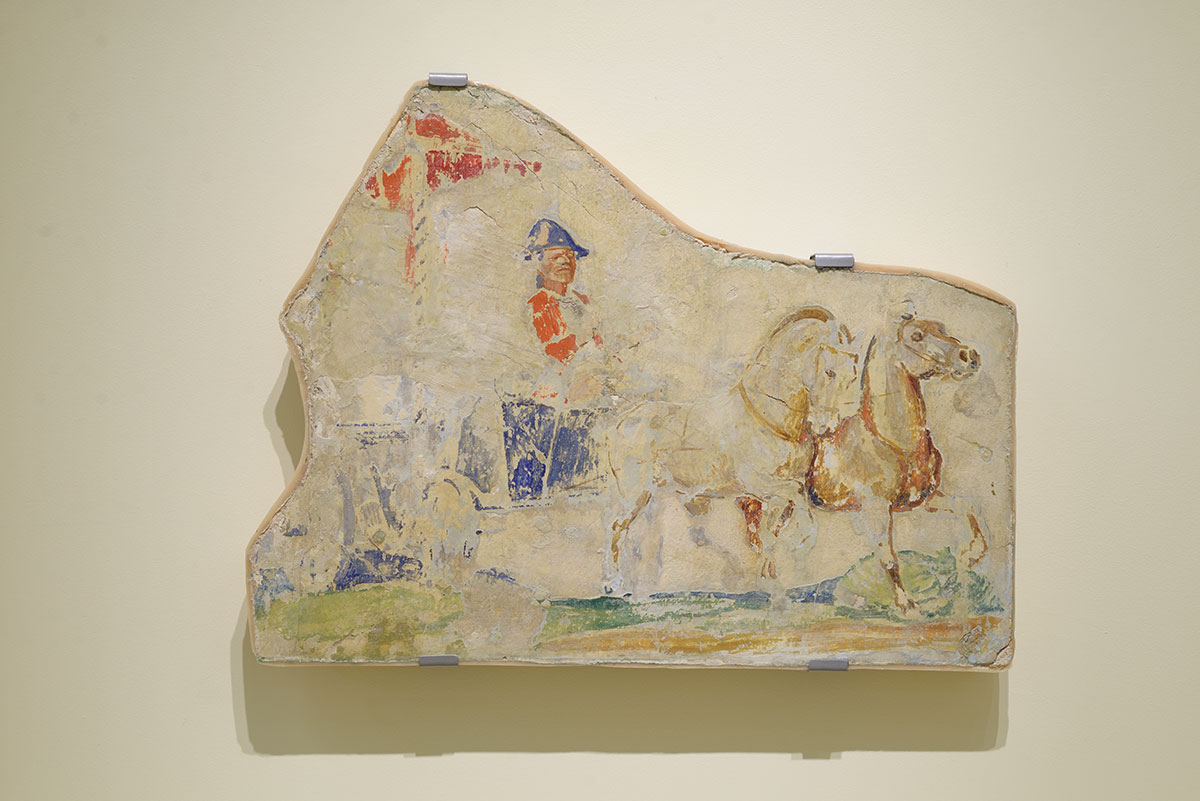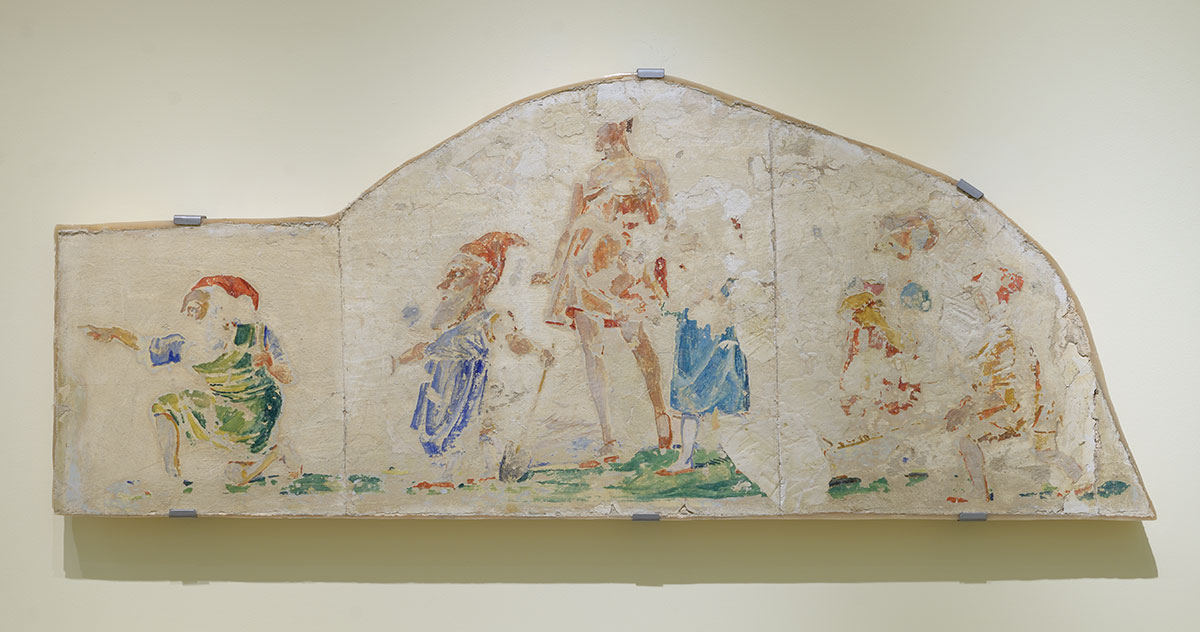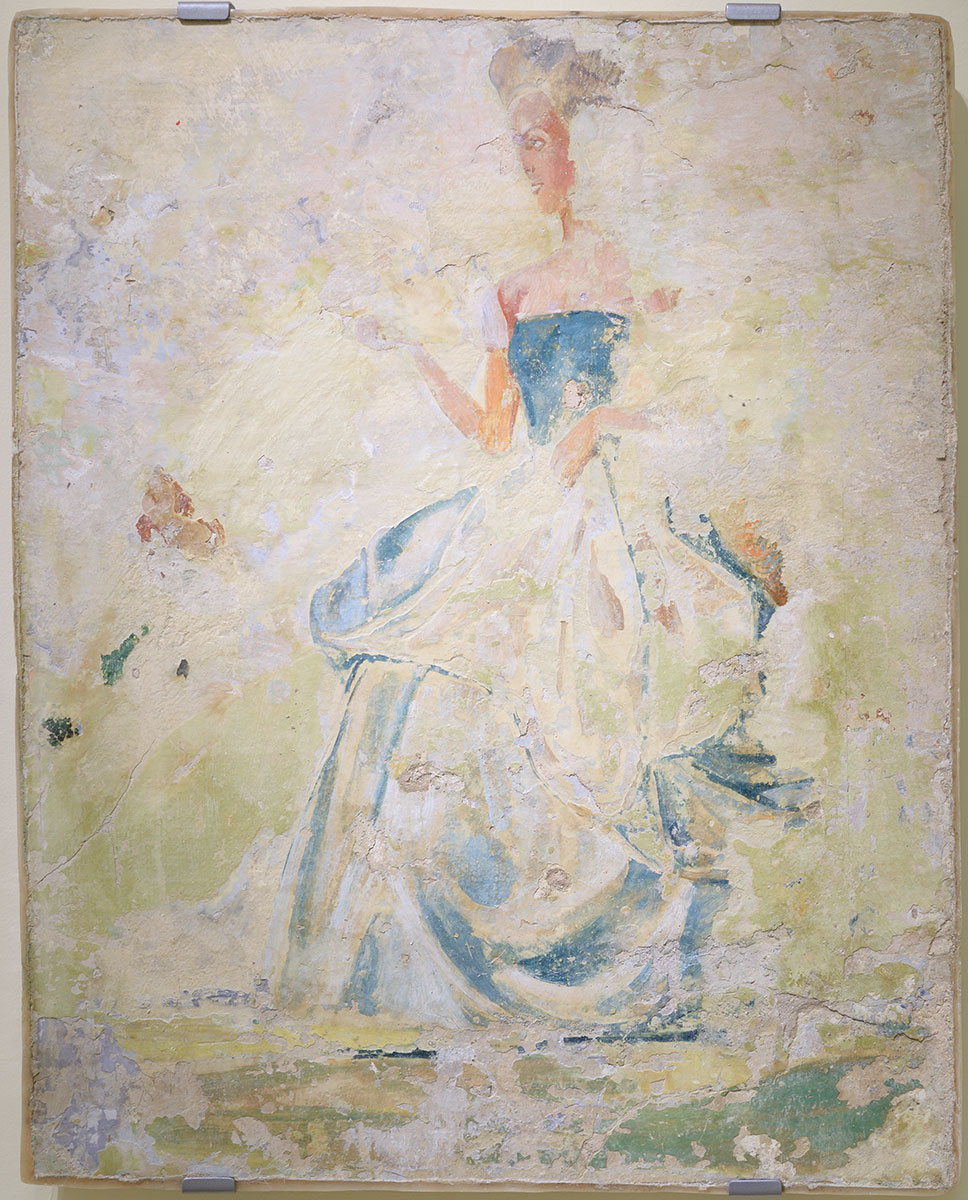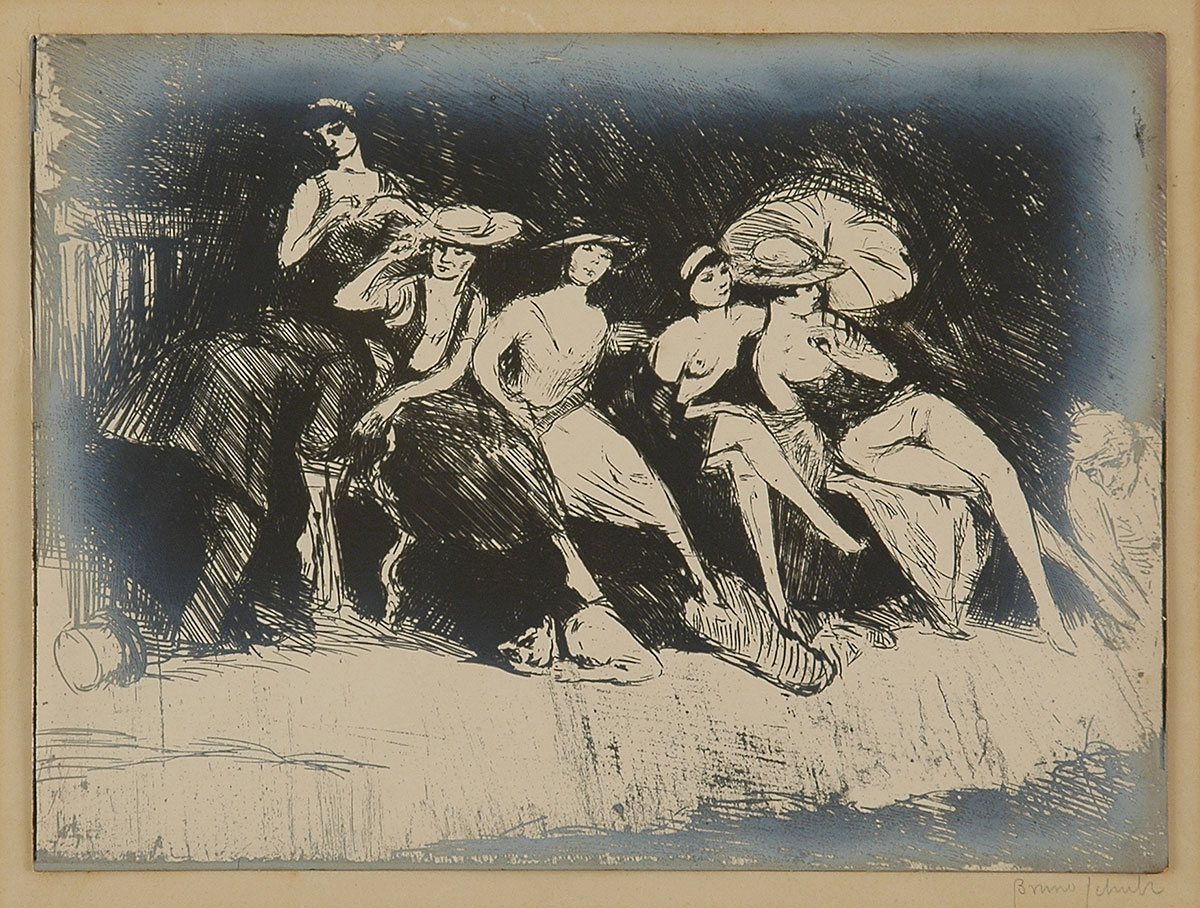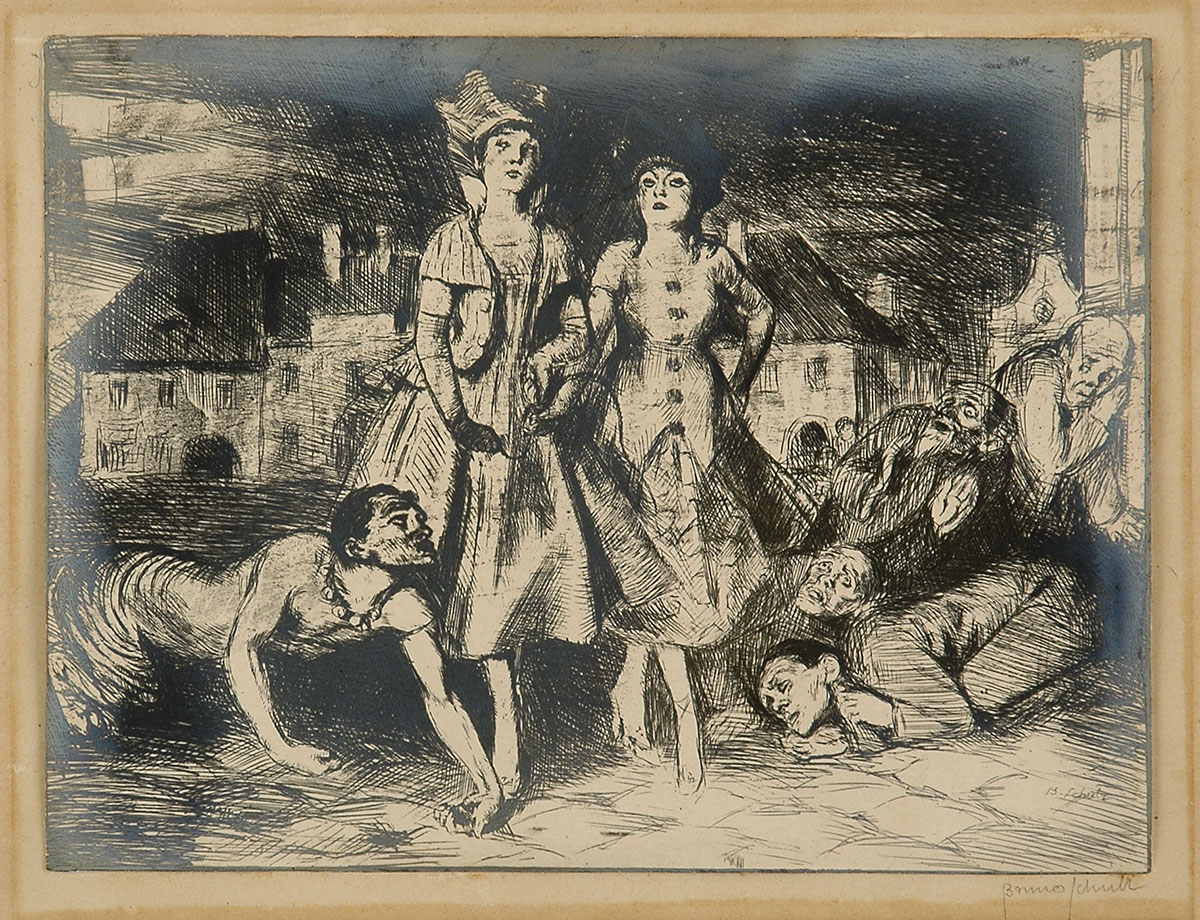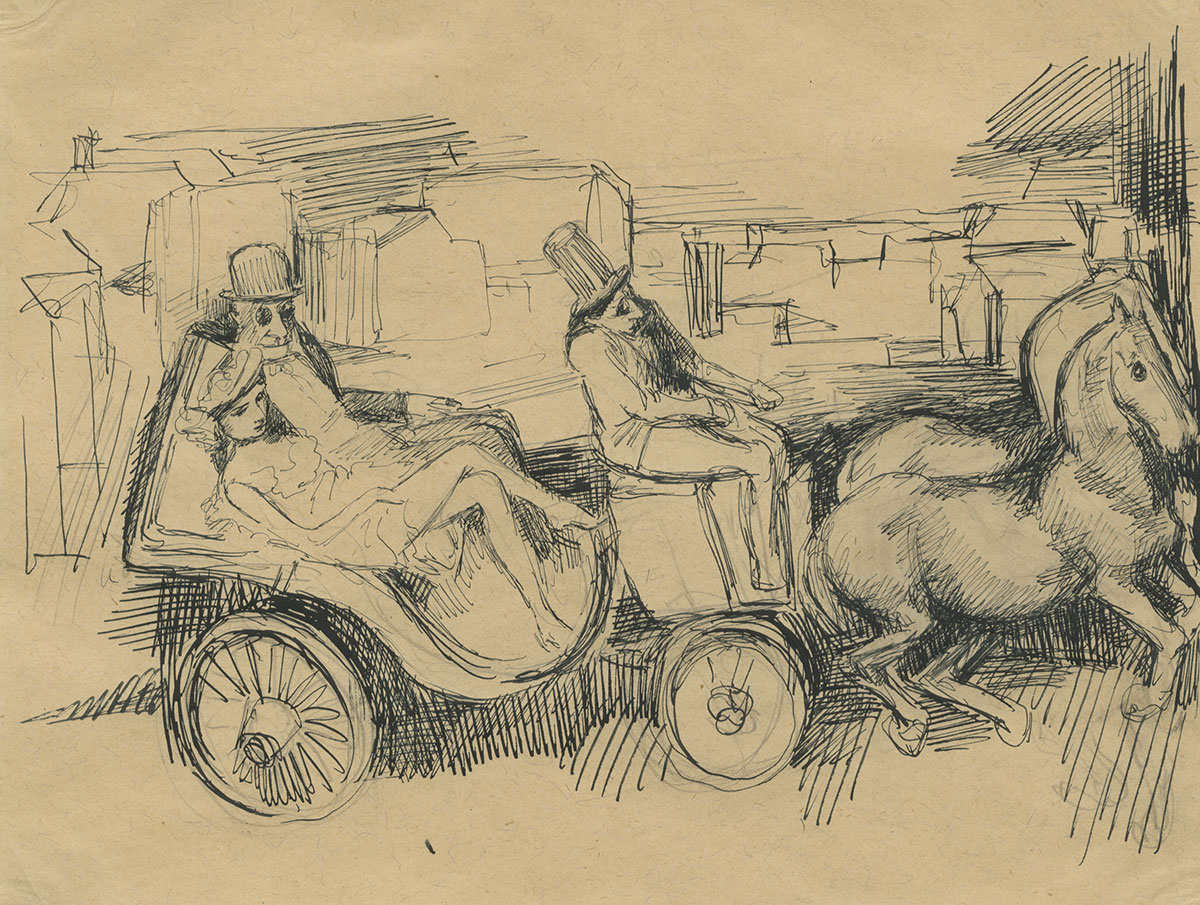Fresco secco
Collection of the Yad Vashem Art Museum, Jerusalem
Loan of the Drohobychyna Museum, Ukraine
|
1892 |
Born in Drohobycz, Galicia to a secular Jewish family, the brother of Hania and Izydor. The family of his mother, Henrietta, owns a sawmill and trades in lumber; his father, Jakub, runs a fabric shop in the market square. |
|
1902 |
Starts secondary schooling. Excels in Polish and drawing. |
|
1910 |
Begins architecture studies at the Polytechnic in Lwów. |
|
1911 |
Cardiopulmonary disease forces him to leave the Polytechnic and return home. |
|
1913 |
Resumes architecture studies in Lwów. |
|
1914 |
Returns to Drohobycz at the outbreak of World War I. |
|
1915 |
His father dies at the age of 69. His childhood home and father’s shop are burnt down in the war. |
|
1917 |
Spends several months in Vienna where he attends lectures and visits museums and galleries. |
|
1918 |
Returns to Drohobycz. Joins Kalleia (Beautiful Things), a group of young Jewish lovers of literature and art. |
|
1920-1922 |
Works secretly on The Book of Idolatry, a portfolio of some 20 prints and a hand-illustrated title page. |
|
1922 |
March - Participates in a group exhibition in Warsaw. |
|
1923 |
Participates in a group exhibition of Jewish artists in Vilna. |
|
1924 |
Begins teaching drawing classes at the high school he himself attended. |
|
1928 |
An exhibition of his work in the resort town of Truskawiec incurs accusations of pornography, and he is suspended from teaching for two months. |
|
1929 |
Awarded tenure. Teaches drawing and handicrafts. |
|
1930 |
A hall in the Spring Salon in Lwów is devoted to his work. He also participates in a group exhibition of 17 Jewish artists in Krakow. |
|
1931 |
His mother, with whom he has been living all these years, dies. Schulz designs a gravestone for his parents. |
|
1933 |
In the spring he begins a romantic relationship with Józefina Szelinńska, a Catholic of Jewish extraction who teaches Polish. |
|
1934 |
The Cinnamon Shops is published in Warsaw and receives laudatory reviews. |
|
1935 |
His brother Izydor, an oil engineer, who supported the whole family, dies of a heart attack. Schulz becomes the sole support of his widowed sister, Hania, and her son Zygmunt. He becomes engaged to Józefina Szelińska. Schulz participates in a group exhibition of the Union of Artists in Lwów. |
|
1936 |
In Warsaw, he meets the literary figure Romana Halpern; they become friends and conduct an extensive correspondence. |
|
1937 |
Schulz breaks off his engagement. |
|
1938 |
August - Schulz travels to Paris in an unsuccessful attempt to gain international recognition. |
|
1939 |
Following the Ribbentrop-Molotov Pact, Drohobycz is annexed to the Soviet Union. |
|
1940 |
Forms a friendship with Anna Płockier, a young artist who fled from Warsaw. |
|
1941 |
June 30 - Drohobycz is occupied by the Germans; Jews are immediately seized for forced labor and executed. |
|
1941-1942 |
Through the Judenrat’s intervention, Schulz is assigned to cataloguing confiscated books. SS Hauptscharführer Felix Landau, in charge of Jewish forced labor in Drohobycz, and who plays an active role in the extermination of Drohobycz’s Jews, takes Schulz under his protection in exchange for his coerced employment as a painter. Schulz is ordered to paint murals on the walls of Landau’s children’s nursery, the riding school (Reitschule), and the casino.
|
|
1942 |
In Aktions in March and August, Jews are deported to the Bełżec death camp. |
* All artworks are housed in the Moshal Repository, Yad Vashem Art Collection
